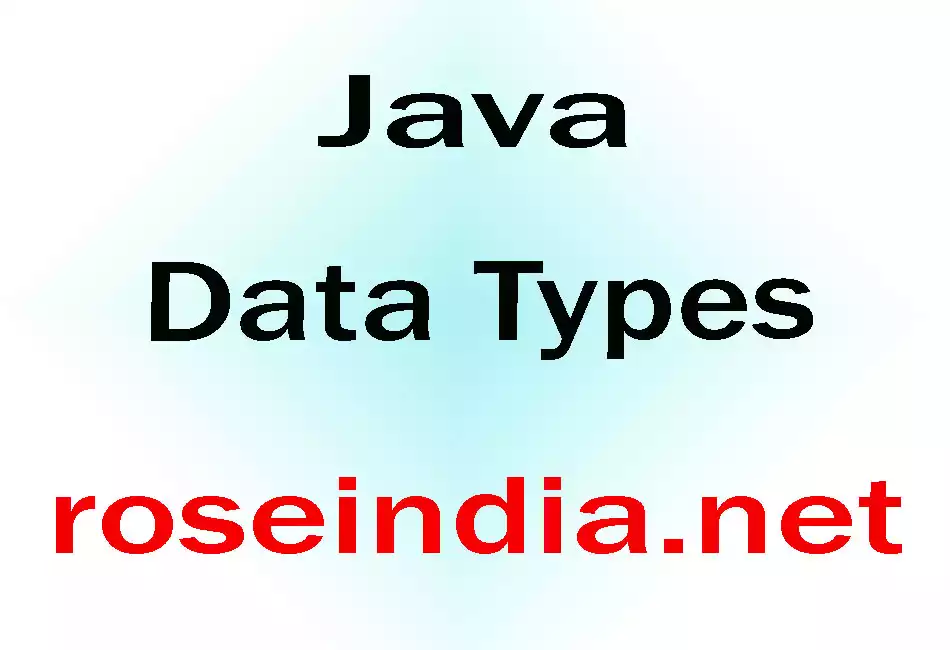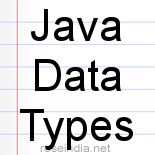Java programming language is a language in which all the variables must be declared first and then to be used.

Java Data Types
Java programming language is a language in which all the variables must be declared first and then to be used. That means to specify the name and the type of the variable. This specifies that Java is a strongly-typed programming language. Like
int pedal = 1;
This shows that there exists a field named 'pedal' that
holds a data as a numerical value '1'. The values contained by the variables
determines its data type and to perform the operations on it.
There are seven more primitive data types which are supported by Java
language programming in addition to int. A primitive data type is a data
type which is predefined in Java. Following are the eight primitive data types:
int
It is a 32-bit signed two's complement integer data type. It ranges from -2,147,483,648
to 2,147,483,647. This data type is used for integer values. However for wider
range of values use long.
byte
The byte data type is an 8-bit signed two's complement integer. It ranges from -128
to127 (inclusive). We can save memory in large arrays using byte. We can also
use byte instead of int to increase the limit of the code.
short
The short data type is a 16-bit signed two's complement integer. It ranges from
-32,768 to 32,767. short is used to save memory in large arrays.
long
The long data type is a 64-bit signed two's complement integer. It ranges from -9,223,372,036,854,775,808
to 9,223,372,036,854,775,807. Use this data type with larger range of values.
float
The float data type is a single-precision 32-bit IEEE 754 floating point. It ranges
from 1.40129846432481707e-45 to 3.40282346638528860e+38 (positive or negative).
Use a float (instead of double) to save memory in large arrays. We do not use
this data type for the exact values such as currency. For that we have to use java.math.BigDecimal class.
double
This data type is a double-precision 64-bit IEEE 754 floating point. It ranges from 4.94065645841246544e-324d to 1.79769313486231570e+308d (positive or negative).
This data type is generally the default choice for decimal values.
boolean
The boolean data type is 1-bit and has only two values: true and
false. We use this data type for conditional statements. true and false are not the same as True and
False. They are defined constants of the language.
char
The char data type is a single 16-bit, unsigned Unicode character. It ranges
from 0 to 65,535. They are not same as ints, shorts etc.
The following table shows the default values for the data types:
| Keyword | Description | Size/Format |
| byte | Byte-length integer | 8-bit two's complement |
| short | Short integer | 16-bit two's complement |
| int | Integer | 32-bit two's complement |
| long | Long integer | 64-bit two's complement |
| float | Single-precision floating point | 32-bit IEEE |
| double | Double-precision floating point | 64-bit IEEE |
| char | A single character | 16-bit Unicode character |
| boolean | A boolean value (true or false) | true or false |
When we declare a field it is not always essential that we initialize it too. The compiler sets a default value to the fields which are not initialized which might be zero or null. However this is not recommended.



